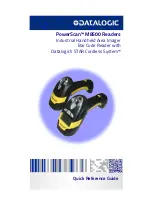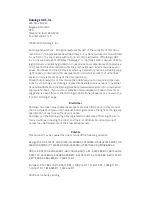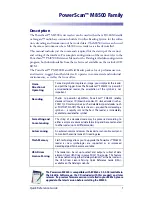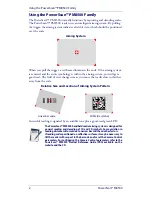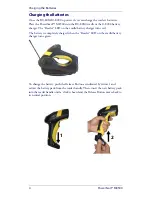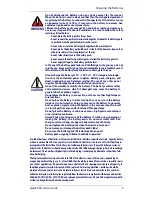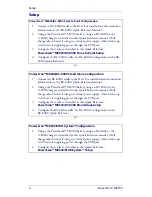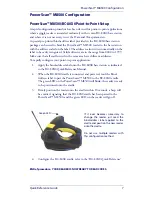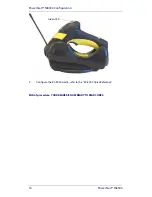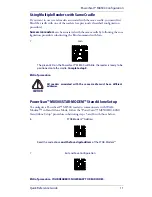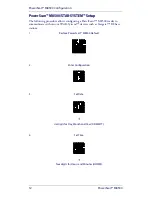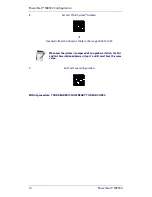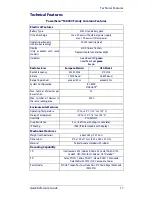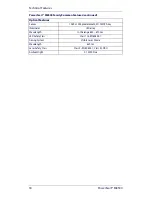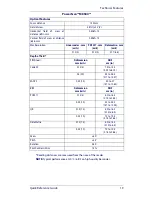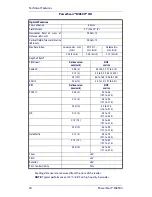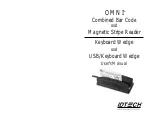
Charging the Batteries
Quick Reference Guide
5
As with other types of batteries, Lithium-Ion (LI) batteries will lose capacity over time. Capacity deteri-
oration is noticeable after one year of service whether the battery is in use or not. It is difficult to pre-
cisely predict the finite life of a LI battery, but cell manufacturers rate them at 500 charge cycles. In
other words, the batteries should be expected to take 500 full discharge/charge cycles before needing
replacement. This number is higher if partial discharging / recharging is adhered to rather than full /
deep discharging,
The typical manufacturer advertised useful life of LI batteries is one to three years, depending on
usage and number of charges, etc., after which they should be removed from service, especially in mis-
sion critical applications. Do not continue to use a battery that is showing excessive loss of capacity, it
should be properly recycled / disposed of and replaced. For most applications, batteries should be
replaced after one year of service to maintain customer satisfaction and minimize safety concerns.
Collect and recycle waste batteries separately from the device in compliance with European Directive
2006/66/EC, 2011/65/EU, 2012/19/EU. and subsequent modifications, US and China regulatory and oth-
ers laws and regulations about the environment.
WARNING
Do not discharge the battery using any device except for the scanner.
When the battery is used in devices other than the designated product, it
may damage the battery or reduce its life expectancy. If the device causes
an abnormal current to flow, it may cause the battery to become hot,
explode or ignite and cause serious injury.
Lithium-ion battery packs may get hot, explode or ignite and cause seri-
ous injury if exposed to abusive conditions. Be sure to follow the safety
warnings listed below:
• Do not place the battery pack in fire or heat.
• Do not connect the positive terminal and negative terminal of the battery pack
to each other with any metal object (such as wire).
• Do not carry or store the battery pack together with metal objects.
• Do not pierce the battery pack with nails, strike it with a hammer, step on it or
otherwise subject it to strong impacts or shocks.
• Do not solder directly onto the battery pack.
• Do not expose the battery pack to liquids, or allow the battery to get wet.
• Do not apply voltages to the battery pack contacts.
In the event the battery pack leaks and the fluid gets into your eye, do not
rub the eye. Rinse well with water and immediately seek medical care. If
left untreated, the battery fluid could cause damage to the eye.
CAUTION
Always charge the battery at 32° – 104°F (0° - 40°C) temperature range.
Use only the authorized power supplies, battery pack, chargers, and
docks supplied by your Datalogic reseller. The use of any other power
supplies can damage the device and void your warranty.
Do not disassemble or modify the battery. The battery contains safety
and protection devices, which, if damaged, may cause the battery to
generate heat, explode or ignite.
Do not place the battery in or near fire, on stoves or other high tempera-
ture locations.
Do not place the battery in direct sunlight, or use or store the battery
inside cars in hot weather. Doing so may cause the battery to generate
heat, explode or ignite. Using the battery in this manner may also result
in a loss of performance and a shortened life expectancy.
Do not place the battery in microwave ovens, high-pressure containers
or on induction cookware.
Immediately discontinue use of the battery if, while using, charging or
storing the battery, the battery emits an unusual smell, feels hot,
changes color or shape, or appears abnormal in any other way.
Do not replace the battery pack when the device is turned on.
Do not remove or damage the battery pack’s label.
Do not use the battery pack if it is damaged in any part.
Battery pack usage by children should be supervised.
Summary of Contents for PowerScan M8500
Page 4: ...NOTES...

